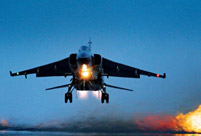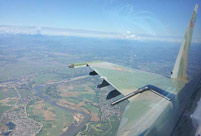

CANBERRA, May 6 -- Australian researches believe "starving" cancer cells could be the key to prevent the growth of tumors, paving the way for the development of new cancer-beating drugs.
Scientists at the Australian National University (ANU) in Canberra announced the breakthrough on Friday, in which they found and blocked a vital "supply route" that cancer cells use to obtain nutrients and grow.
Professor Stefan Br?er from the ANU Research School of Biology said his team identified the "gateways" through which cancer cells "feed", blocked them and then found the cells almost completely stopped growing, in a discovery which could revolutionize chemotherapy and save lives.
"This should lead to chemotherapy with much less serious side-effects, as normal cells do not use glutamine as a building material," Br?er said in a statement released on Friday.
"Crucial white blood cells, which current treatments damage, could be spared, and it could cut out the hair loss that chemotherapy causes."
He said that most cancer research undertaken currently is focused on one particular strain of cancer cell, whereas his team's discovery could be used to stop the growth of hundreds of different cancer types.
"This is likely to work in a wide range of cancers, because it is a very common mechanism in cancer cells," Br?er said.
He added that his team initially identified one "gateway" which it blocked by disabling the cells' "glutamine transport mechanism," but the cancer found another way to feed on nutrients. The team then found and blocked a second gateway and the cancer cells stopped growing.
Lead author Angelika Br?er, also from ANU Research School of Biology, said cancer research was improving in leaps and bounds as technology gets better, with the ANU team to use robots to test "thousands" of potential cancer stopping drugs for their ability to successfully block the gateways.
"It is an exciting time to do cancer research. We now have precision tools in our hands to manipulate the genome of cancer cells, allowing us to address problems that were difficult to solve previously," Br?er said.
"We have developed a set of tests which make it very easy to determine if a drug is targeting glutamine transporters."
"This means we can set robots to work and that will test tens of thousands of drugs for us over the next year or two."
 Beijing Style: ready for bare legs
Beijing Style: ready for bare legs Century-old station sees railyway evolution
Century-old station sees railyway evolution Amazing scenery of Xisha Islands
Amazing scenery of Xisha Islands Enthusiasts perform Kung Fu at Wudang Mountain
Enthusiasts perform Kung Fu at Wudang Mountain Stunning photos of China's fighter jets in drill
Stunning photos of China's fighter jets in drill Monk's mummified body to be made into a gold Buddha statue
Monk's mummified body to be made into a gold Buddha statue Asia's longest and highest suspension bridge to open to traffic
Asia's longest and highest suspension bridge to open to traffic China's first interactive robot looks like a beauty
China's first interactive robot looks like a beauty Vietnamese Su-30 fighters fly over Nanwei Island in South China Sea
Vietnamese Su-30 fighters fly over Nanwei Island in South China Sea Top 20 hottest women in the world in 2014
Top 20 hottest women in the world in 2014 Top 10 hardest languages to learn
Top 10 hardest languages to learn 10 Chinese female stars with most beautiful faces
10 Chinese female stars with most beautiful faces China’s Top 10 Unique Bridges, Highways and Roads
China’s Top 10 Unique Bridges, Highways and Roads Unpredictable Trump could swing either way on China
Unpredictable Trump could swing either way on China Military institution scandal highlights shady Putianese private clinics
Military institution scandal highlights shady Putianese private clinics How to maintain property in communist system looms large as land warrants expire
How to maintain property in communist system looms large as land warrants expire Yiwu, China’s wholesale capital, switches its economic growth engine from manufacturing to design
Yiwu, China’s wholesale capital, switches its economic growth engine from manufacturing to designDay|Week